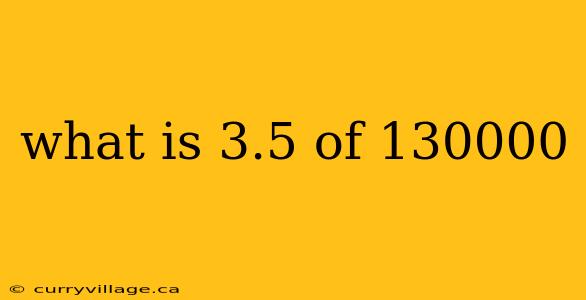Finding a percentage of a number is a common calculation in many areas of life, from calculating sales tax to determining discounts. This article will guide you through calculating 3.5% of 130,000, explaining the process step-by-step so you can easily understand and apply the method to other percentage calculations.
Understanding Percentages
Before we begin, let's quickly review what percentages represent. A percentage is a fraction of 100. For example, 3.5% can be written as 3.5/100 or 0.035.
Calculating 3.5% of 130,000
There are two main ways to calculate this:
Method 1: Using Decimal Conversion
-
Convert the percentage to a decimal: Divide 3.5 by 100. This gives you 0.035.
-
Multiply the decimal by the number: Multiply 0.035 by 130,000.
0.035 * 130,000 = 4550
Therefore, 3.5% of 130,000 is
Method 2: Using Fractions
-
Convert the percentage to a fraction: 3.5% can be written as 3.5/100 or 7/200 (after simplifying).
-
Multiply the fraction by the number: Multiply 7/200 by 130,000.
(7/200) * 130,000 = 4550
Again, we find that 3.5% of 130,000 is
Practical Applications
Understanding how to calculate percentages is crucial in various real-world situations. Here are a few examples:
- Sales tax: If you buy something for $130,000 and the sales tax is 3.5%, you would pay an additional $4550 in taxes.
- Discounts: A 3.5% discount on a $130,000 item would reduce the price by $4550.
- Commission: A salesperson earning a 3.5% commission on $130,000 in sales would earn $4550.
- Interest: Calculating simple interest on a loan or investment often involves percentage calculations.
Conclusion
Calculating percentages is a fundamental mathematical skill with wide-ranging applications. As demonstrated, finding 3.5% of 130,000 is straightforward using either the decimal conversion method or the fraction method, both yielding the same result: 4550. Mastering this skill will empower you to confidently tackle similar percentage problems in various contexts.
